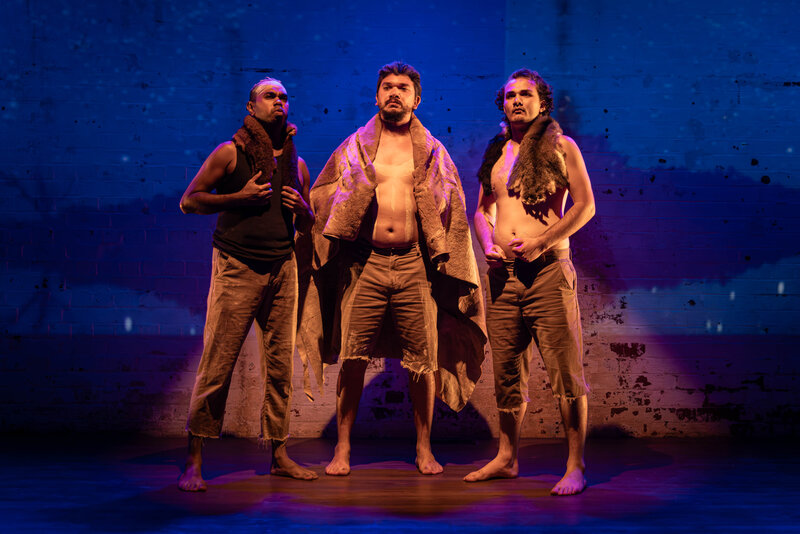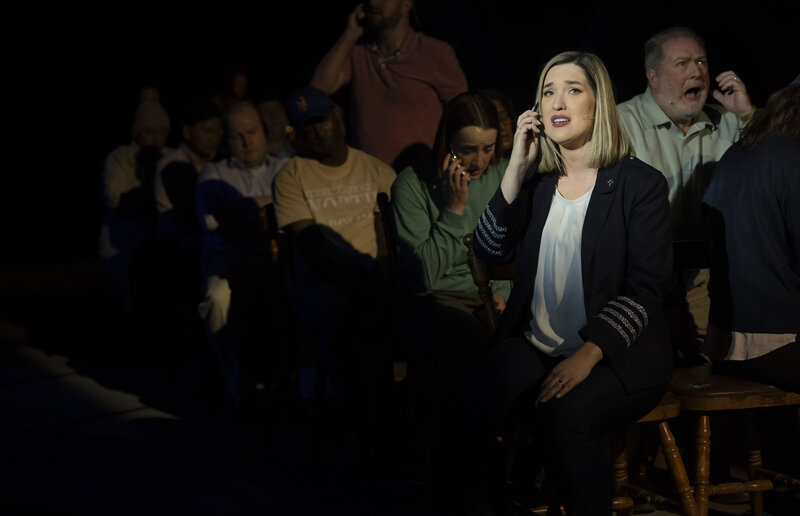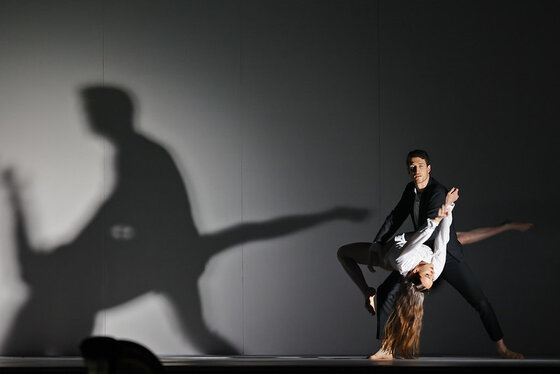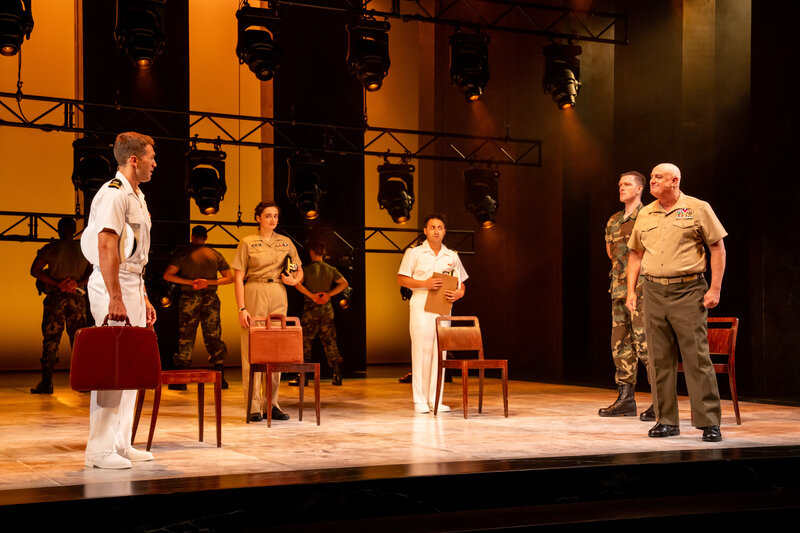Journalists are sometimes asked to do some pretty unpleasant things. Many will go to great lengths to break a story. It doesn’t always end the way they would have liked or wanted. Just think of the mess in which 60 Minutes was recently embroiled in trying to “recover” the abducted children of an Australian mother in Lebanon. Do reporters push the boundaries of what is legal and what is not? Most certainly they do, but I’d like to think never to the extent that it is portrayed The Paper, but it still makes for a ripper yarn.
 Mind you, it starts out positively humorously, as the editor of a fictitious newspaper – The Melbourne Times – hatches a plan to bring down its more successful rival, The National. Alix (Gabrielle Savrone) and her “henchmen” gather in the dark in the lounge room of her home. Why in the dark? Because she is fearful of being seen to be conspiring with others to do just what she is planning, namely something illicit. When one of her senior journalists, Lake (Sergej Arcaba), points out that it is far more suspicious if under cover of darkness one after another “participant” turns up on her doorstep, she relents, insisting they collaborate in “hushed tones”.
Mind you, it starts out positively humorously, as the editor of a fictitious newspaper – The Melbourne Times – hatches a plan to bring down its more successful rival, The National. Alix (Gabrielle Savrone) and her “henchmen” gather in the dark in the lounge room of her home. Why in the dark? Because she is fearful of being seen to be conspiring with others to do just what she is planning, namely something illicit. When one of her senior journalists, Lake (Sergej Arcaba), points out that it is far more suspicious if under cover of darkness one after another “participant” turns up on her doorstep, she relents, insisting they collaborate in “hushed tones”.
As the lights are turned on, we – the audience – become privy to what is about to go down … and a nasty piece of work it is too. A 16-year-old male prostitute, brought up in foster care, Brenner (Maximillian Johnson) is to secure incriminating photographs with the CEO of The National, supposedly a straight family man. Brenner happens to be in a relationship with freelance photographer, Nathan (Brayden Lewtas), who has worked with both The Times and The National, and mightn’t be happy with what is about to take place, but goes along with it. Also in on what transpires is another Times journo, Sandy (Carolyn Dawes).
Amazingly, Doyle wrote the play and put the whole thing together in just seven days. He tackled it a few pages at a time and as the actors were practicing the lines he’d constructed the previous 24 hours, he was hard at it on the following day’s offering. Tough but rewarding work for all concerned, I dare say.
Paper unfolds in nine chapters and, as is his want, Doyle plays with our minds so that there is no shortage of twists in the narrative. The plot is wicked and wild. The perpetrators’ fear is apparent throughout and, as the saying goes, “the best laid plans of mice and men …” Nevertheless, the adage they live by is “successful people don’t quit”. I defy anyone to work out just where this will end up.
Another plus is Doyle’s pacing. He keeps the action moving, save for an unexpected lull in one scene two thirds of the way through, which could have benefited from some tightening or more activity.
 Gabrielle Savrone – who operates the theatre with the writer and director of the production – appears to relish the role of the master manipulator, as she and the others go through a range of emotions, from despair to elation. I was particularly taken by the performance of 20-year-old Maximillian Johnson, who brings a blend of naïveté and reckless abandon to his character.
Gabrielle Savrone – who operates the theatre with the writer and director of the production – appears to relish the role of the master manipulator, as she and the others go through a range of emotions, from despair to elation. I was particularly taken by the performance of 20-year-old Maximillian Johnson, who brings a blend of naïveté and reckless abandon to his character.
The set, too, deserves a favourable mention for its attention to detail. A most attractive floral cupboard, which doubles as a liquor cabinet, is the centerpiece. A piano sits opposite a brown couch, either side of which is an elegant, high-seated leather and wooden chair. There’s a coffee table and three neatly stacked and very appealing small, old style suitcases. The roof is leaking (not literally, but for the purposes of the play) and a plastic tub, inside of which sits a metal bucket, is collecting “the drips” in the hallway entrance – a nice touch.
Paper packs punch. What shakes out mightn’t be pretty, but is certainly engaging, at times uncomfortable … and memorable. Fortunately it is fiction, for to best of my knowledge journalism hasn’t yet quite sunk to these tawdry depths or has it? Paper is playing at The Owl and Cat Theatre, 34 Swan Street Richmond, until 14th May.
Alex First

David Edwards is the former editor of The Blurb and a contributor on film and television




